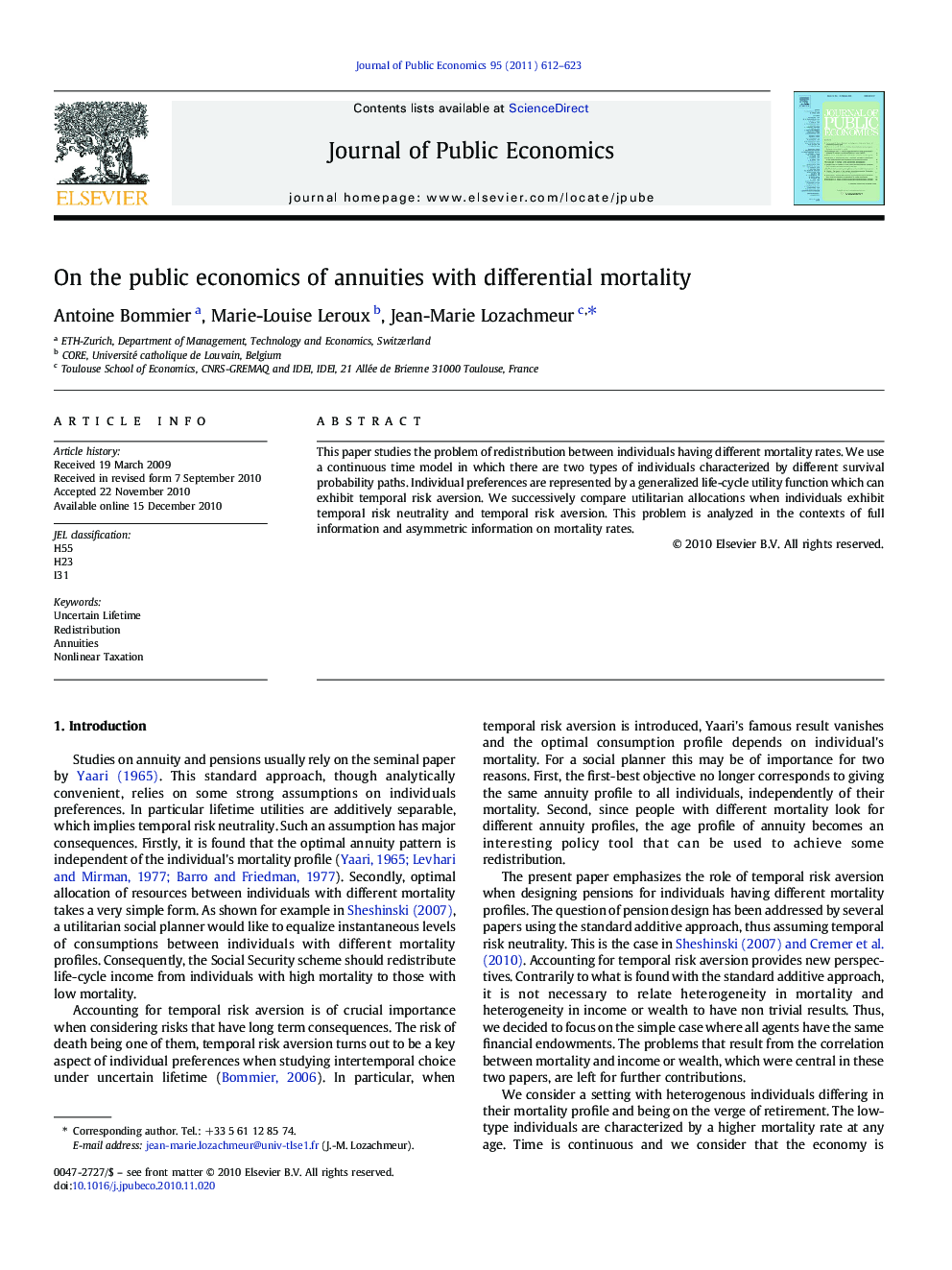| Article ID | Journal | Published Year | Pages | File Type |
|---|---|---|---|---|
| 969356 | Journal of Public Economics | 2011 | 12 Pages |
This paper studies the problem of redistribution between individuals having different mortality rates. We use a continuous time model in which there are two types of individuals characterized by different survival probability paths. Individual preferences are represented by a generalized life-cycle utility function which can exhibit temporal risk aversion. We successively compare utilitarian allocations when individuals exhibit temporal risk neutrality and temporal risk aversion. This problem is analyzed in the contexts of full information and asymmetric information on mortality rates.
Research Highlights► This model studies the optimal redistribution policy when agents have different mortality rates. ► If agents are temporal risk neutral, all agents obtain the same consumption profile. ► If they are risk averse, low-survival agents receive higher per period consumptions at all ages. ► Under asymmetric information, if private annuity markets are fair, the first best is implementable. ► If savings are impossible, the allocation depends on the commitment capacity of the government.
